Ancient Quest For Mechanical Life: Humanoid Robots Of Our Ancestors
A. Sutherland - AncientPages.com - The concept of humanoid robots has been known since ancient times. The first mention of this kind of mechanical device can be found in the Chinese philosophical treatise Liezi, which was built in the third century BC.
The first-century human-like machine was designed by the Greek inventor Hero of Alexandria.
However, al-Jazari - a Muslim polymath: a scholar, inventor, mechanical engineer, craftsman, artist, and mathematician from Jazirat ibn Umar, who lived during the Islamic Golden Age, is considered to be the father of robotics.
The mechanical genius - Al-Jazari (1136-1206) - was the most famous mechanical engineer of his time, some 1000 years ago. He was as talented as the famous Leonardo da Vinci, who also designed diverse machines and robots, but Al-Jazari lived 300 years earlier, i.e at the turn of the thirteenth century.
He is best known for writing the "Book of Knowledge of Ingenious Mechanical Devices" in 1206, where he described fifty mechanical devices and instructions on how to construct them.
The Elephant Clock, leaf from The Book of Knowledge of Ingenious Mechanical Devices by al–Jazari.
Al-Jazari pioneered advances in robotics and is credited with inventing the camshaft, the crankshaft, and segmental gearing - present in almost every machine today.
Among one of the most famous inventions of this competent engineer and skilled craftsman is 'The Elephant Clock', in which an automaton reacted after certain intervals of time. The various elements that compose this clock move and make a sound every half hour. This device is reminiscent of the elaborate clocks found in medieval town halls in Europe, which made the passage of time more entertaining with the performance of the moving figures.
Although none of the devices Al-Jazari's devised survived to modern times, they are other examples of centuries-old robots that are still fully functional.
One of them is a mechanical monk - a prayer machine that never tires - who was made approximately in 1562 by the Spanish watchmaker Juanelo Turri (c. 1500 — 1585) on request of King Philip II of Spain.
This one of the most fascinating clockwork automatons ever made, a 15-inch high figure of a well-known miraculous monk, San Diego de Alcalá.
The circumstances of this robot are that the son of the King of Spain, Don Carlos, fell down a set of stairs in 1562 and fell into a deep illness due to his injuries. The King prayed to God, asking for his son to be spared with a miracle and promising a miracle in return.
In a few days, the boy began to heal, and in the end, he was perfectly fine. The King then commissioned this monk as a celebration of prayer, piety, and faith.
This automaton - probably one of the most miraculous things anyone had ever seen in the 16th century - is now in the collection of the Smithsonian Museum in Washington, DC.
In the years 1768-1774, the Swiss watchmaker Pierre Jaquet Droz and his son Henri-Louis constructed three extremely complex androids (housed in the Musée d'Art et d'Histoire of Neuchâtel in Switzerland) that intrigue people even today.
The dolls are endowed with different skills and they are: the Lady Musician, the Draftsman, and the most impressive of them - the Writer, made of 6000 pieces is sitting and holding a quill (goose feather) that dips into the inkwell, and then he shakes it slightly before beginning to draw letters on paper with the pen. There is a special mechanism, allowing his eyes to follow his work.
The Writer can write any text not exceeding 40 characters, spread over four lines. The main mechanism of the invention is the programming system disk (shown in the lower part of the image), which allows him to write text without external intervention. It is also possible to make him write any words, letter by letter.
The Writer might even be interrupted, stopping in the middle of the word, if asked, and wrote another.
The Cartoonist can draw four different drawings (portrait of Louis XV, the royal couple, dog, and Amora absorber chariot pulled by a butterfly), while the organist plays the organ.
The main mechanism of the Writer is the programming system disk, which allows him to write text without external intervention.
Karakuri mechanical puppet tradition is very long, and the oldest works are almost 300 years. The only existing illustrated manual, 'Karakuri Zui' written in the Edo period (1603~1867), helped restore this automatic doll.
The word "Karakuri" means a mechanical device. At first, the dolls had no driven mechanisms. However, in the seventeenth century, the Spaniards brought a mechanical clock to Japan, and the Japanese began to install the clock's mechanism in Karakuri dolls.
From now on, Karakuri androids could move and give out tea and confuse and surprise.
The first version of this article was originally published on April 23, 2015
Written by – A. Sutherland - AncientPages.com Senior Staff Writer
Copyright © AncientPages.com All rights reserved. This material may not be published, broadcast, rewritten or redistributed in whole or part without the express written permission of AncientPages.com
More From Ancient Pages
-
 Massive Menhir Champ Dolent Built By Fairies In Ancient Beliefs Of Brittany’s People
Featured Stories | Jan 13, 2025
Massive Menhir Champ Dolent Built By Fairies In Ancient Beliefs Of Brittany’s People
Featured Stories | Jan 13, 2025 -
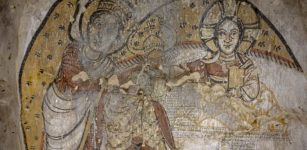 New, Unique Wall Paintings Discovered In Old Dongola, Sudan
Archaeology | Apr 10, 2023
New, Unique Wall Paintings Discovered In Old Dongola, Sudan
Archaeology | Apr 10, 2023 -
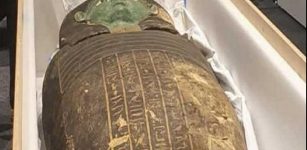 Egypt Recovers Ancient Wooden Coffin From Houston Museum In The US
Archaeology | Oct 4, 2022
Egypt Recovers Ancient Wooden Coffin From Houston Museum In The US
Archaeology | Oct 4, 2022 -
 Four Canopic Jars Dated To The 26th Dynasty Unearthed At South Asasif Necropolis, Luxor
Archaeology | Jun 27, 2018
Four Canopic Jars Dated To The 26th Dynasty Unearthed At South Asasif Necropolis, Luxor
Archaeology | Jun 27, 2018 -
 Underground Ancient City Of Kish And Its Advanced Hydraulics System
Ancient Technology | Aug 28, 2015
Underground Ancient City Of Kish And Its Advanced Hydraulics System
Ancient Technology | Aug 28, 2015 -
 Never Before Seen 3D Images Of Noah’s Ark Finally Revealed To The Public
Archaeology | Nov 17, 2019
Never Before Seen 3D Images Of Noah’s Ark Finally Revealed To The Public
Archaeology | Nov 17, 2019 -
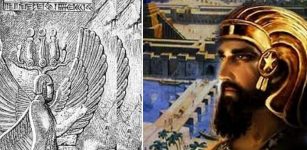 Cyrus The Great: Founder Of Achaemenid Empire Who Conquered Medians, Lydians And Babylonians
Featured Stories | Mar 21, 2019
Cyrus The Great: Founder Of Achaemenid Empire Who Conquered Medians, Lydians And Babylonians
Featured Stories | Mar 21, 2019 -
 Guide To The Classics: On The Art Of Physical Exercise, A 16th Century Account Of Ancient Sports And Workouts
Featured Stories | Jul 26, 2024
Guide To The Classics: On The Art Of Physical Exercise, A 16th Century Account Of Ancient Sports And Workouts
Featured Stories | Jul 26, 2024 -
 Oldest Sea Reptile From Age Of Dinosaurs Found On A Remote Arctic Island
News | Apr 3, 2023
Oldest Sea Reptile From Age Of Dinosaurs Found On A Remote Arctic Island
News | Apr 3, 2023 -
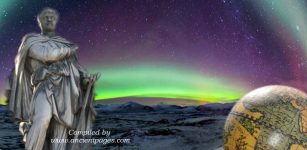 Pytheas’s Voyage To The Arctic In 325 B.C. And Account Of Thule, The Strange Land Beyond
Featured Stories | May 29, 2021
Pytheas’s Voyage To The Arctic In 325 B.C. And Account Of Thule, The Strange Land Beyond
Featured Stories | May 29, 2021 -
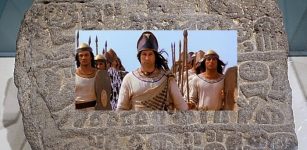 Forgotten Ancient Kingdom Of Tuwana Is Hidden Among Ruins In Cappadocia
Civilizations | Mar 12, 2016
Forgotten Ancient Kingdom Of Tuwana Is Hidden Among Ruins In Cappadocia
Civilizations | Mar 12, 2016 -
 Enigmatic Cernunnos – Most Ancient, Stag-Antlered, Peaceful God Of Celtic People
Celtic Mythology | Aug 26, 2019
Enigmatic Cernunnos – Most Ancient, Stag-Antlered, Peaceful God Of Celtic People
Celtic Mythology | Aug 26, 2019 -
 Vast Fortification Enclosing Walled Oasis Dating Back 4,000 years In North-Western Arabia – Unearthed
Archaeology | Jan 10, 2024
Vast Fortification Enclosing Walled Oasis Dating Back 4,000 years In North-Western Arabia – Unearthed
Archaeology | Jan 10, 2024 -
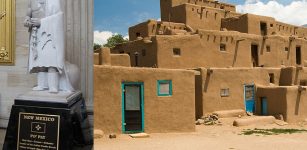 On This Day In History: Pueblo Indians Capture Santa Fe From The Spanish – On August 21, 1680
News | Aug 21, 2016
On This Day In History: Pueblo Indians Capture Santa Fe From The Spanish – On August 21, 1680
News | Aug 21, 2016 -
 Forbidden Knowledge: Secret Ancient Gates Of The Shining Ones – More Surprising Discoveries – Part 3
Ancient Mysteries | Jul 19, 2019
Forbidden Knowledge: Secret Ancient Gates Of The Shining Ones – More Surprising Discoveries – Part 3
Ancient Mysteries | Jul 19, 2019 -
 Ancient Mysteries Of West Virginia: Did Ancient Celts Visit North America Where They Left An Ogham Inscribed Bone Needle With Christian Symbols?
Artifacts | Mar 1, 2017
Ancient Mysteries Of West Virginia: Did Ancient Celts Visit North America Where They Left An Ogham Inscribed Bone Needle With Christian Symbols?
Artifacts | Mar 1, 2017 -
 “Beowulf” – Old English Poem Was Probably Written By A Single Author – New Study
Archaeology | Apr 17, 2019
“Beowulf” – Old English Poem Was Probably Written By A Single Author – New Study
Archaeology | Apr 17, 2019 -
 The Great Stupa At Sanchi – Oldest Stone Structure In India
Featured Stories | Dec 27, 2015
The Great Stupa At Sanchi – Oldest Stone Structure In India
Featured Stories | Dec 27, 2015 -
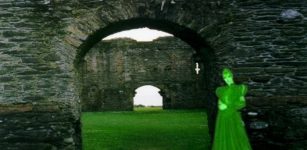 Enigmatic Green Lady In British Folklore
Featured Stories | Jan 9, 2017
Enigmatic Green Lady In British Folklore
Featured Stories | Jan 9, 2017 -
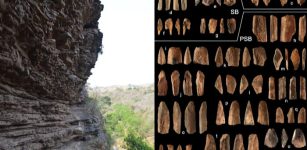 80,000-Year-Old Bone Tools Discovered In South Africa Sheds New Light How Homo Sapiens Evolved
Archaeology | Dec 5, 2022
80,000-Year-Old Bone Tools Discovered In South Africa Sheds New Light How Homo Sapiens Evolved
Archaeology | Dec 5, 2022




